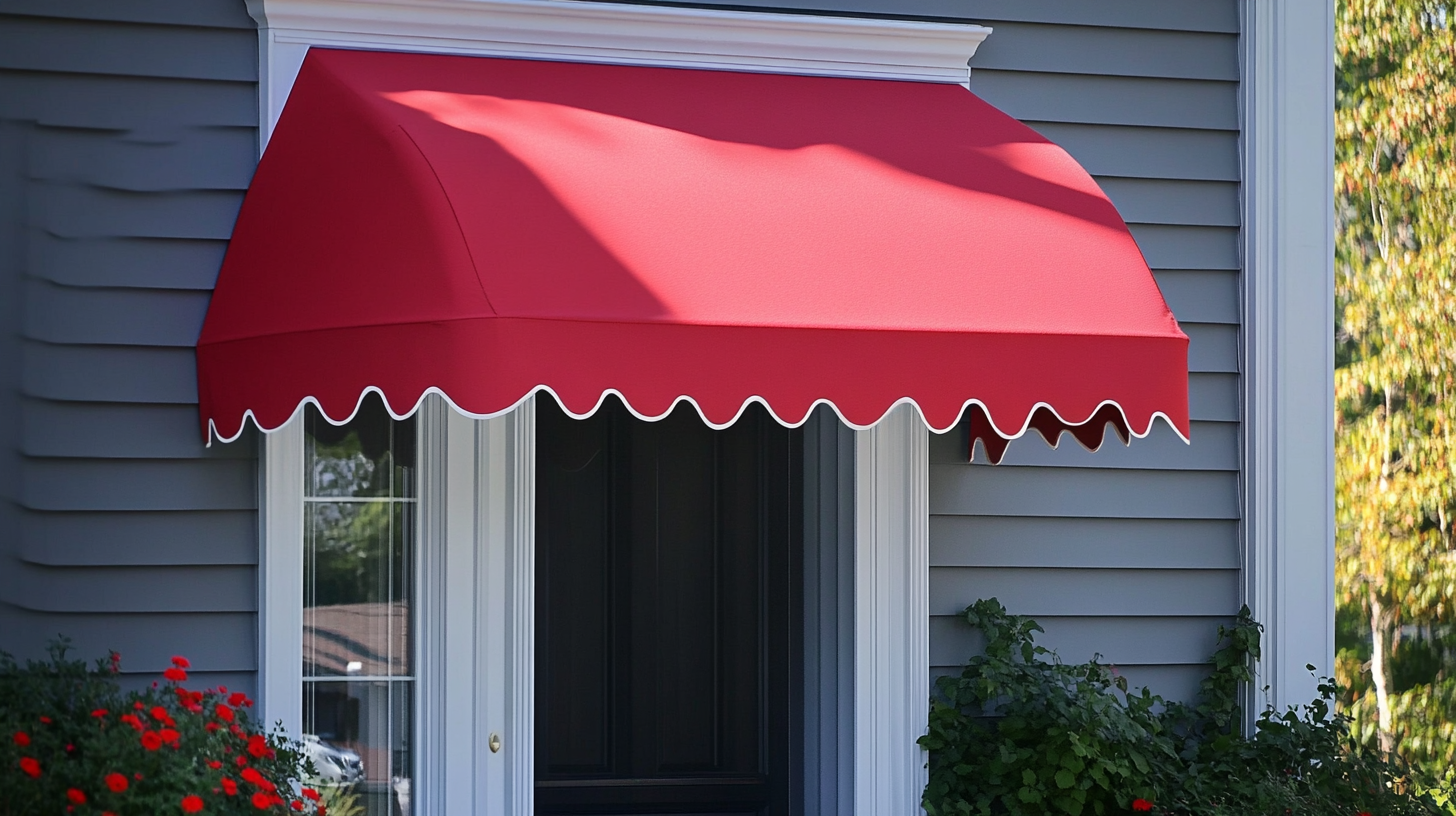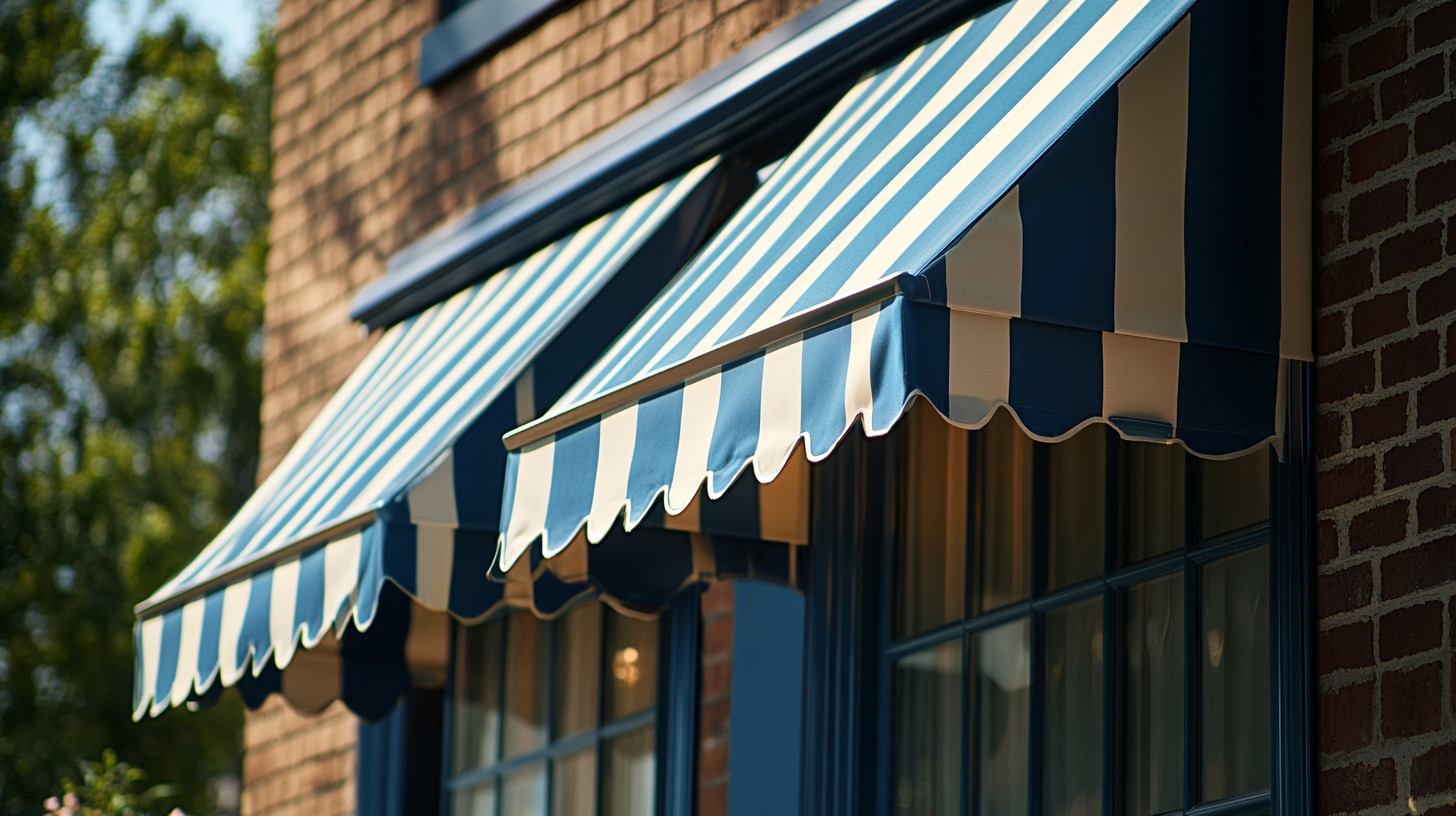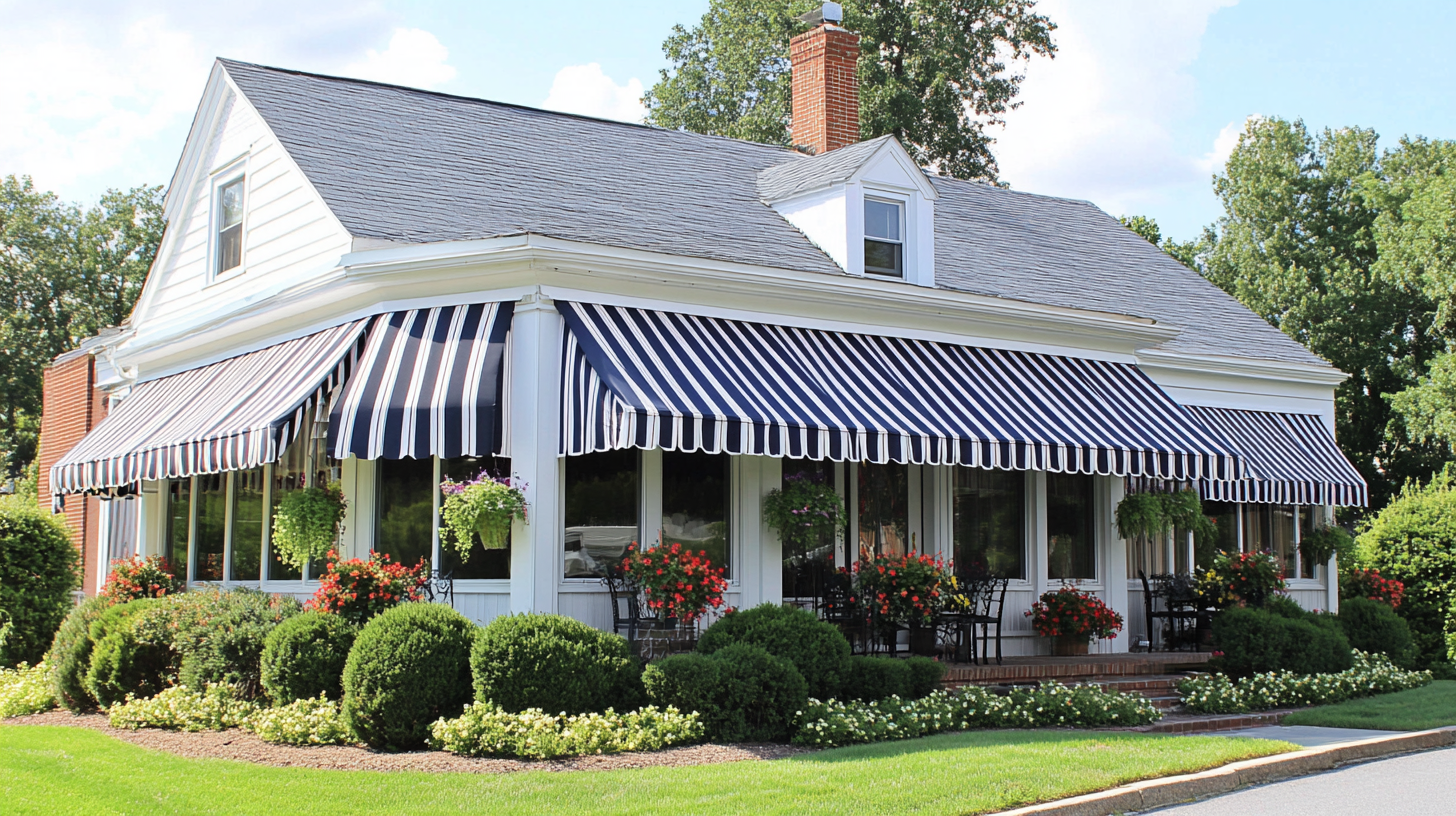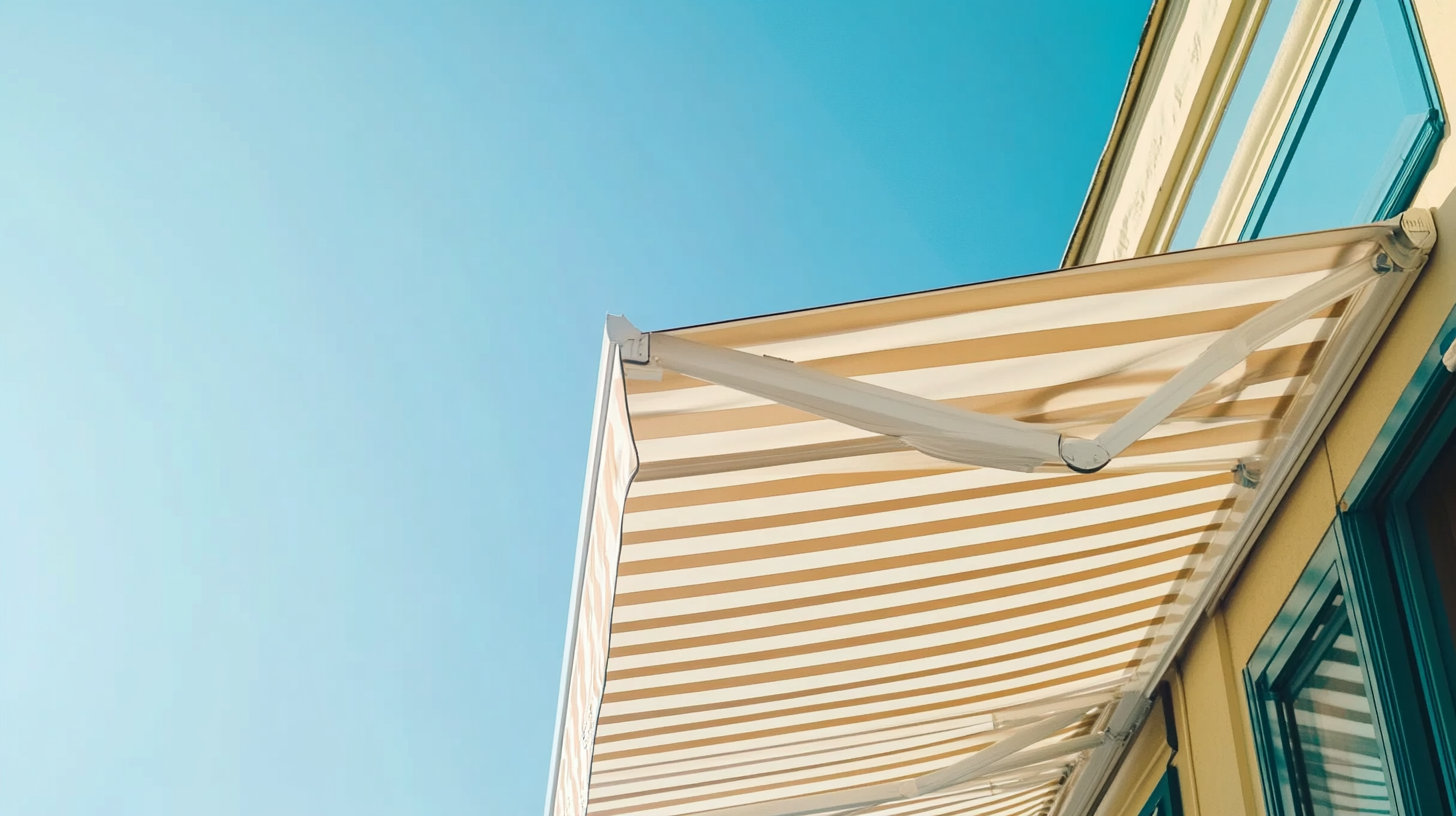Contact Us
STATEN ISLAND FIBERAMA
STATEN ISLAND FIBERAMA
In recent years, the popularity of residential awnings has surged, driven by their practical benefits and aesthetic appeal. According to a report from the American Institute of Architects, about 70% of homeowners are now prioritizing outdoor living spaces, making it crucial to enhance these areas with functional designs. Residential awnings not only provide shade and protection from the elements, but they also contribute to energy efficiency. A study by the U.S. Department of Energy indicates that awnings can reduce indoor cooling costs by up to 25%, significantly lowering energy bills while creating a more comfortable environment.
Moreover, the market for residential awnings is expected to witness substantial growth, with estimates from Market Research Future projecting a compound annual growth rate (CAGR) of 5.2% from 2021 to 2028. This trend underscores the increasing recognition of residential awnings not just as a luxury addition, but as a valuable investment for homes. This blog aims to unlock the benefits of residential awnings by providing comprehensive specifications and a practical installation guide, ensuring that homeowners can make informed decisions that enhance both their property’s value and livability.

Residential awnings are becoming an increasingly popular addition for homeowners seeking to enhance their outdoor spaces. With the changing seasons, especially as spring ushers in a fresh perspective, many are looking for ways to rejuvenate their homes. Awnings not only offer shade and protection from the elements but also contribute to the aesthetic appeal of your property. Their versatility allows for a variety of styles and colors, making it easy for homeowners to select an option that complements their unique architecture and personal taste. One of the key advantages of residential awnings is their ability to improve energy efficiency. By shading windows and doors from direct sunlight, awnings reduce the heat that infiltrates homes, helping to maintain cooler indoor temperatures and lower air conditioning costs. This aspect becomes even more critical during warmer months when homeowners are looking to cut down on energy expenses. Moreover, awnings serve as a protective barrier for outdoor furniture and decks, prolonging their lifespan and minimizing maintenance efforts. In addition to practicality, the installation of awnings can make a significant statement in your home's exterior decor. As highlighted by current trends in spring porch decor, creating welcoming environments begins with thoughtful design choices. Awnings can frame entrances and provide an inviting atmosphere for guests, lending character and charm to your home. With the right awning, you can transform mere entryways into standout features that encapsulate your home's personality, establishing a delightful first impression for all who arrive.

When selecting the perfect residential awning, it’s crucial to consider a range of essential specifications that can greatly enhance your outdoor experience. First and foremost, the material of the awning plays a significant role in durability and performance. Common materials include acrylic, canvas, and vinyl. Acrylic fabric, for instance, is known for its longevity and resistance to fading, making it an ideal choice for homeowners looking to invest in a product that withstands the elements effectively.
Another critical specification to consider is the awning's size and projection. Assessing the available space and determining the desired amount of shade are vital steps in this process. Awnings come in various sizes, and the right choice can drastically improve your patio or deck's usability. Additionally, the projection determines how far the awning extends from the wall; a broader projection provides more shade but may require more robust mounting solutions.
Finally, don’t overlook the operating mechanisms available. Awnings can be manual or motorized, with each option presenting its advantages. Motorized awnings offer convenience and ease of use, especially for larger structures, while manual awnings may appeal to those who prefer a more traditional approach. When evaluating these specifications, consider how they align with your lifestyle and how each choice impacts functionality and aesthetics in your outdoor living space.

When it comes to improving the functionality and aesthetics of your home, installing a residential awning can be a game-changer. To achieve the best results, it's essential to follow a structured, step-by-step guide. According to the "2019 Home Improvement Research Institute Report," nearly 70% of homeowners noted increased satisfaction after installing exterior awnings, highlighting their appeal not just for shade but also for enhanced property value.
Begin by determining the ideal placement for your awning. Measure the area where the awning will be installed and consult manufacturer specifications for size options. The American Institute of Architects (AIA) suggests that proper placement can reduce indoor temperatures by up to 15 degrees Fahrenheit, showcasing the energy-efficient benefits of awnings. Once measurements are confirmed, gather the necessary tools and materials including brackets, screws, and a drill, ensuring you select a durable fabric designed to withstand varying weather conditions.
Next, mark the installation points on your wall, typically above windows or doors, ensuring they are level. A laser level can be particularly useful for achieving accuracy. Notably, research conducted by the International Window Film Association indicates that well-installed awnings can minimize solar heat gain by approximately 77%, providing both comfort and energy savings. Carefully attach the mounting brackets before securing the awning itself, following the manufacturer’s instructions closely. Finally, enjoy the benefits of your new awning, from increased outdoor living space to decreased cooling costs, all while enhancing the visual appeal of your home.

When it comes to enhancing the functionality and aesthetics of your home, residential awnings can make a significant difference. However, to enjoy their benefits for years to come, maintenance is crucial. Regular cleaning is one of the first steps towards prolonging the life of your awnings. Depending on the material, using a soft brush or a sponge with mild detergent and water can help remove dirt, pollen, and debris. It's advisable to do this at least twice a year, or more often if your awnings are exposed to heavy environmental factors.
Another essential aspect of maintaining your awnings is to inspect them regularly for any signs of damage or wear. Look for fraying edges, rust on metal components, or mildew on fabric. Promptly addressing these issues can prevent small problems from escalating into more significant repairs. Additionally, applying a protective spray designed for awning materials can help shield them from UV rays and weather elements, ensuring they remain vibrant and durable over time.
Finally, consider retracting your awnings when not in use, particularly during harsh weather conditions, such as heavy rain or strong winds. This simple practice can significantly reduce the risk of damage. By following these maintenance tips, you can effectively enhance the longevity of your residential awnings, allowing you to enjoy their perks for many years while maintaining their appearance and functionality.
When it comes to enhancing curb appeal, residential awnings can play a pivotal role, and leveraging creative design ideas can genuinely transform a home's exterior. According to a report by the American Institute of Architects, homeowners are increasingly recognizing the aesthetic and functional benefits of awnings, with 45% reporting that they improve not only sun protection but also the overall look of their property. Awnings come in various materials and colors, allowing homeowners to choose options that resonate with their personal style and complement their home's architecture.
Incorporating awnings into your home’s design doesn’t just celebrate innovation; it can also boost energy efficiency. The Department of Energy states that proper shading from awnings can reduce energy costs by an impressive 15-25%, thanks to decreased reliance on air conditioning systems during the hottest months. Choosing vibrant colors or unique patterns for awnings can draw attention and create a focal point, making the home more inviting. For instance, a chic striped awning can extend over a patio area, providing a stylish shaded zone that enhances outdoor living while captivating passersby.
Further, combining awnings with picturesque landscaping can create a harmonious visual appeal. The National Association of Home Builders highlights that properties with well-designed outdoor spaces, including thoughtfully placed awnings, can increase home value by up to 10%. Implementing awnings not only adds functionality but also serves as a canvas for creativity, allowing for personal expression that can uplift the overall ambiance of the home. With thoughtful design, awnings can seamlessly blend style with practicality, making them an excellent choice for homeowners looking to enhance their facade.
© 2025 Fiberama All Rights Reserved.
